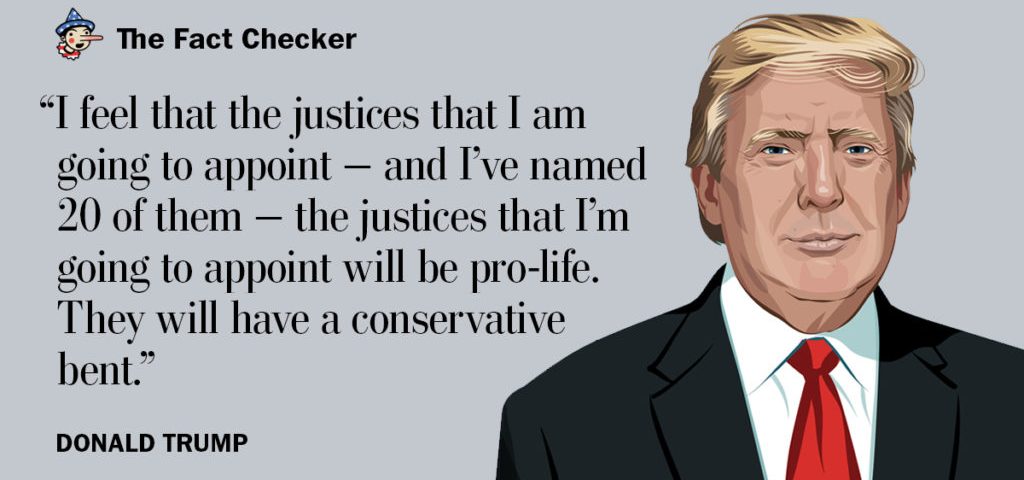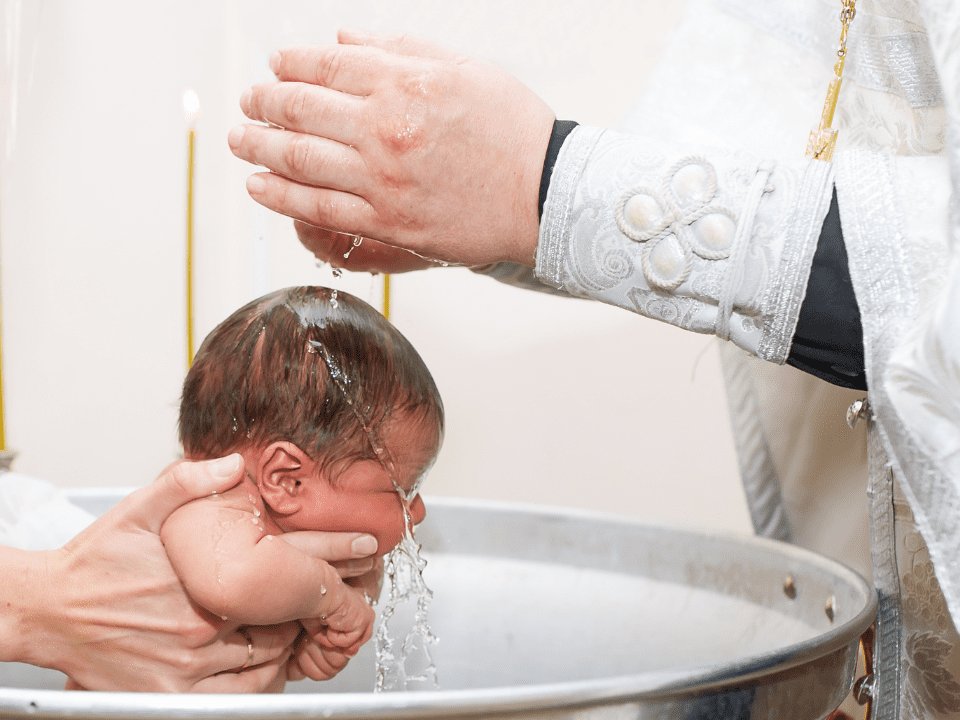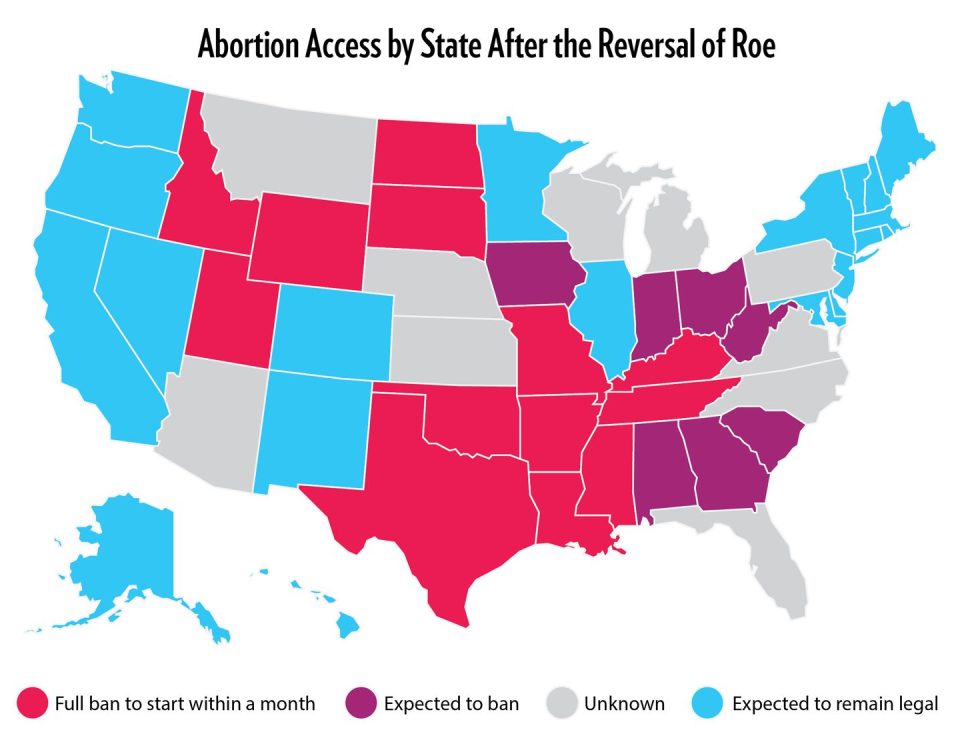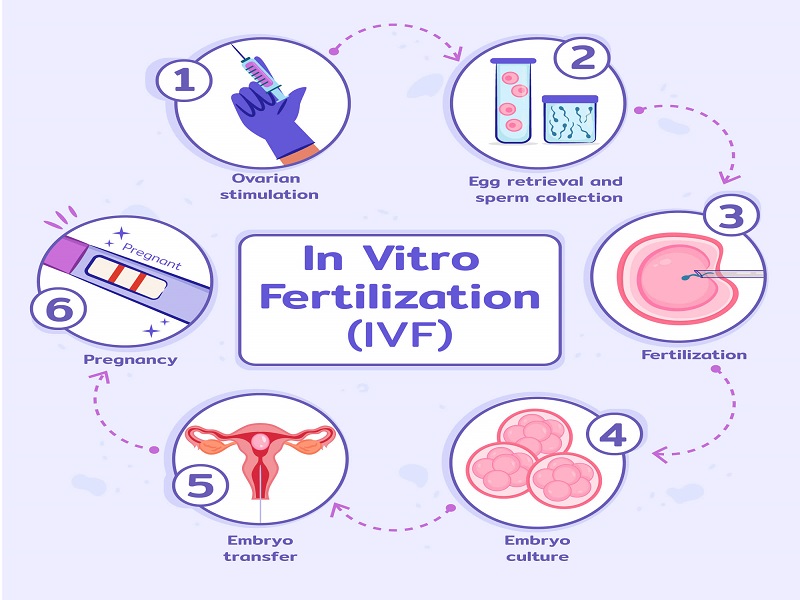
Does Blue Cross Blue Shield Insurance Cover IVF?
April 12, 2025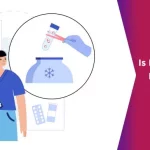
How to Get IVF Covered by Insurance: Your Ultimate Guide to Navigating the Process
April 12, 2025Is Trump Against IVF? Unpacking the Facts, Policies, and What It Means for You
In vitro fertilization (IVF) has become a lifeline for millions of Americans dreaming of starting a family. But with political debates heating up, one question keeps popping up: Is Donald Trump against IVF? If you’re scrolling through social media or catching snippets of news, you might feel confused by the mixed messages. Some say he’s a champion for fertility treatments; others claim his actions threaten access. So, what’s the real story? Let’s dive into the facts, cut through the noise, and figure out what Trump’s stance means for families like yours.
This isn’t just about politics—it’s personal. Whether you’re considering IVF, supporting a loved one through it, or just curious about where the country’s headed, this article will give you a clear picture. We’ll explore Trump’s statements, his administration’s actions, and the bigger trends shaping IVF access today. Plus, we’ll tackle some angles you won’t find everywhere else, like how state laws and global fertility shifts play into this. Ready? Let’s get started.
Trump’s Public Stance on IVF: What He’s Said
Donald Trump has made several high-profile statements about IVF, especially during and after the 2024 presidential campaign. In August 2024, while speaking in Michigan, he dropped a bombshell: “Under the Trump administration, we are going to be paying for [IVF] treatment… or your insurance company will be mandated to pay for it.” That’s a big promise—free IVF for all who need it. He doubled down later, calling himself “the father of IVF” during a Fox News town hall in October 2024, a bold claim that raised eyebrows.
Fast forward to February 18, 2025. As president, Trump signed an executive order aimed at “expanding access to in vitro fertilization” and reducing costs. The White House touted it as a win for families, saying it would “aggressively reduce out-of-pocket and health plan costs” within 90 days by tasking advisors with policy recommendations. On the surface, this sounds like full-throated support. Trump himself said at Mar-a-Lago, “I think the women and families, husbands are very appreciative of it.”
But words are one thing—actions are another. Critics point out that the executive order doesn’t guarantee free IVF yet; it’s more of a starting point. So, is Trump really pro-IVF, or is this just political theater? To answer that, we need to look beyond the headlines.
The Backstory: How IVF Became a Political Hot Potato
IVF wasn’t always a political lightning rod. Since the first U.S. IVF baby was born in 1981, it’s grown into a widely accepted option for infertility, helping over 85,000 babies come into the world in 2021 alone, according to the Department of Health and Human Services. But things shifted after the Supreme Court overturned Roe v. Wade in 2022—a decision Trump takes credit for, thanks to his three justice appointments.
That ruling didn’t just affect abortion; it opened the door to debates about embryos and “personhood.” In February 2024, the Alabama Supreme Court ruled that frozen embryos created through IVF are legally children. Clinics paused services, fearing lawsuits if embryos were damaged or discarded. Trump quickly responded, saying he “strongly supports the availability of IVF” and urged Alabama lawmakers to fix it. They did, passing protections within weeks.
This moment put IVF on the national stage. Democrats accused Trump of indirectly threatening IVF through his Roe legacy. Republicans, including Trump, scrambled to clarify their support. It’s a messy backdrop that shapes everything he says—and does—about IVF today.
Digging Into the Executive Order: What’s Really Happening?
Let’s break down that February 2025 executive order. It’s not a law—it’s a directive. It tells Trump’s team to come up with ideas to make IVF cheaper and more accessible. The White House says it’s about “easing unnecessary statutory or regulatory burdens” and supporting “loving and longing mothers and fathers.” Sounds great, right? But here’s the catch: it’s light on details.
- What it does: Orders policy recommendations within 90 days (so, by mid-May 2025, we should hear more).
- What it doesn’t do: Provide immediate funding or mandate insurance coverage—yet.
Compare this to Trump’s campaign promise of free IVF, and there’s a gap. Some see it as a step forward; others call it a “PR stunt.” Senator Patty Murray, a Democrat from Washington, tweeted that Republicans have blocked real IVF legislation multiple times, suggesting Trump’s move is all talk. Meanwhile, groups like Resolve, a leading infertility advocacy organization, praised it as a rare focus on IVF from any administration.
So, is Trump against IVF? This order says no—but it’s not a full yes either. It’s a promise to figure it out, which leaves room for doubt.
Quick Poll: What Do You Think?
Trump’s executive order—game-changer or empty gesture? Vote below and see what others say!
- A) It’s a solid start to help families.
- B) It’s just politics, no real impact.
- C) I’m waiting to see the details.
Check back later for results!
The Anti-IVF Argument: Where’s the Pushback Coming From?
Not everyone’s cheering. Some of Trump’s biggest supporters—anti-abortion activists—hate IVF. Why? Because the process often creates extra embryos that aren’t used. To them, those embryos are human lives, and discarding them is wrong. After the executive order, Kristan Hawkins of Students for Life of America called it “tragic,” comparing IVF to eugenics.
This tension isn’t new. The Catholic Church, a key conservative voice, has long opposed IVF for similar reasons. Trump’s running mate, JD Vance, a Catholic, voted against a 2024 Senate bill to protect IVF nationwide. Yet Vance later said he supports IVF access, suggesting his faith doesn’t dictate his policy.
Here’s where it gets tricky: Trump’s tied to the anti-abortion movement. He brags about ending Roe, and groups like the Heritage Foundation, which back his agenda, have pushed “personhood” laws that could ban IVF. If Trump’s not against IVF himself, some of his allies are—and that could shape what happens next.
IVF by the Numbers: A Reality Check
Let’s put this in perspective with some stats:
- Cost per cycle: $12,000–$25,000 (White House, 2025).
- Success rate: About 30% for women under 35, dropping with age (CDC, 2021).
- Public support: 6 in 10 Americans back IVF access (AP-NORC, June 2024).
Families are spending big and facing heartbreak. If Trump’s serious, he’s got a real problem to solve.
Trump’s Record: Actions Speak Louder Than Words
Let’s look at what Trump’s actually done—not just said—about IVF and reproductive rights.
First Term (2017–2021)
- Tax breaks: Doubled the child tax credit and let new parents withdraw $5,000 penalty-free from retirement accounts for birth or adoption. Pro-family, sure, but not IVF-specific.
- Supreme Court: Appointed three justices who overturned Roe, sparking the embryo debates that now threaten IVF in some states.
Second Term (2025–Present)
- Executive order: The February 2025 move is his biggest IVF play so far. It’s early days, but it’s a signal of intent.
Critics say his Roe legacy outweighs any pro-IVF talk. Democrats argue that without Roe, states can pass laws—like Alabama’s—that mess with IVF. Trump counters that he’s fixing it, pointing to Alabama’s quick response as proof he’s a “leader” on the issue.
What’s Missing From the Conversation?
Most articles stop here—Trump’s words, his order, the anti-IVF crowd. But there’s more to this story. Let’s explore three angles you won’t find everywhere else.
1. State-Level Chaos: The Real Threat to IVF
The feds don’t control IVF—states do. Post-Roe, 14 states have pushed “personhood” laws that could ban IVF by defining life at fertilization. Texas, Missouri, and Kansas GOP platforms already hint at this. Trump’s executive order might push for access, but if states say no, it’s a tug-of-war.
Take Alabama: After the 2024 ruling, clinics reopened, but the fix was temporary. Legal experts warn that without federal protection, IVF’s on shaky ground. Trump hasn’t addressed this state-federal clash head-on. If he’s not against IVF, he’ll need a plan to stop rogue states.
2. Global Trends: What Can the U.S. Learn?
IVF’s a global issue, and other countries offer clues. In Denmark, the government funds up to three IVF cycles—success rates are high, and costs are low. Japan’s tackling its birth rate crisis with subsidies, too. Trump’s “free IVF” idea isn’t crazy—it’s working elsewhere. But the U.S. lags: only 25% of employers cover IVF (White House, 2025), and Medicaid rarely does.
Could Trump borrow from abroad? He hasn’t said, but it’s a gap worth filling. Imagine a U.S. where IVF’s as routine as a checkup—possible, but not without big changes.
3. The Fertility Crisis: IVF’s Bigger Picture
Here’s something wild: U.S. fertility rates hit a historic low in 2023, dropping 3% from 2022 (HHS, 2025). Trump’s “we want more babies” line isn’t just rhetoric—it’s a real issue. Robert F. Kennedy Jr., now heading Health and Human Services, posted in 2024 about investigating infertility causes like chemicals and nutrition. IVF’s part of that puzzle.
If Trump’s pro-IVF, he could tie it to this crisis. Why not fund research into why 1 in 7 couples struggle to conceive? It’s a fresh angle that could win over skeptics—and help families beyond just IVF.
What Does This Mean for You?
Okay, enough big-picture stuff. How does Trump’s stance affect you—whether you’re planning IVF, supporting someone who is, or just voting in the next election?
If You’re Considering IVF
- ✔️ Hope: Trump’s order could mean lower costs soon. Stay tuned for May 2025 updates.
- ❌ Risk: State laws could still block access, especially in red states. Check your local rules.
- Tip: Start saving now—$12,000+ is no joke. Look into clinics with payment plans or grants from groups like Baby Quest.
If You’re a Voter
- ✔️ Power: Your vote shapes Congress, which could pass (or block) real IVF laws.
- ❌ Confusion: Trump’s mixed signals mean you’ll need to dig into candidates’ records, not just promises.
- Tip: Ask: Does my rep support IVF bills? The Right to IVF Act failed in 2024—see who voted no.
If You’re a Parent or Ally
- ✔️ Support: Share Trump’s pro-IVF clips with struggling friends—it’s a morale boost.
- ❌ Limits: Emotional support matters, but costs are still a hurdle without firm policy.
- Tip: Host a fundraiser or connect them with online IVF communities for advice.
Action Steps: Your IVF Game Plan
- Research: Look up your state’s IVF laws—Google “[your state] IVF regulations 2025.”
- Budget: Estimate costs with an online IVF calculator (try FertilityIQ).
- Advocate: Email your senator about IVF access—takes 5 minutes and could sway policy.
Interactive Quiz: Where Do You Stand?
Let’s make this fun. Answer these quick questions to see how Trump’s IVF stance aligns with you!
- Do you think IVF should be free for everyone?
- A) Yes, totally!
- B) Maybe, if it’s affordable.
- C) No, it’s too expensive for taxpayers.
- Should states or the feds control IVF rules?
- A) Feds—keep it consistent.
- B) States—local needs matter.
- C) Neither—let clinics decide.
- Is Trump’s executive order enough?
- A) Yes, it’s a start.
- B) No, we need laws now.
- C) I don’t trust it.
Tally your A’s, B’s, and C’s:
- Mostly A’s: You’re all-in for bold IVF support—Trump’s on your wavelength.
- Mostly B’s: You’re practical—Trump’s order is a maybe for you.
- Mostly C’s: You’re skeptical—Trump’s got work to convince you.
Share your results in the comments!
The Bigger Picture: IVF in 2025 and Beyond
Zoom out for a sec. IVF’s not just about Trump—it’s about where America’s headed. Social media’s buzzing with chatter (check X posts from March 2025—people are split but vocal). Google Trends shows “IVF access” spiking since February 2025, tied to Trump’s order. Users want clarity: Will it be affordable? Safe? Available?
Here’s my take: Trump’s not against IVF—he’s riding a wave of public support (6 in 10 back it, per AP-NORC). But his party’s split. Some Republicans want IVF gone; others see it as a family-friendly win. Trump’s playing both sides—pro-IVF for voters, vague enough for his base. It’s smart politics, but it leaves families hanging.
A Mini-Analysis: What Could Free IVF Cost?
Let’s crunch some numbers (yep, original math!). Say 1 million couples try IVF yearly, and each cycle’s $20,000 on average. That’s $20 billion. Split it between government and insurance, maybe $10 billion each. The U.S. budget’s $6 trillion—$10 billion is 0.17%. Tiny, but critics like Senator Rand Paul say we’re already $2 trillion in debt. Feasible? Yes. Easy? No.
Real Stories: IVF Families Weigh In
Meet Sarah, a 34-year-old from Ohio. She’s on her second IVF round, out $30,000 already. “Trump’s order sounds nice, but I need help now,” she says. “Ohio’s laws are fuzzy—will embryos get ‘rights’ here too?” Then there’s Mike, a dad in California whose twins came via IVF. “I don’t care who’s president—just don’t take this away from us.”
These voices matter. Trump’s not against IVF for them—he’s a lifeline. But delays or state battles could crush their dreams.
So, Is Trump Against IVF? The Verdict
After all this, here’s the bottom line: Trump’s not against IVF. He’s pushing for it—publicly, repeatedly, and with policy moves like the 2025 order. But it’s not black-and-white. His Roe legacy and anti-IVF allies muddy the waters. He’s not banning it, but he’s not locking in access either—not yet.
Think of it like this: Trump’s offering a half-built bridge. It could lead to affordable IVF—or collapse under pressure from states and conservatives. For now, he’s pro-IVF in word and intent. Whether that turns into action? We’ll see by May 2025.
Your Turn: What’s Next?
This isn’t over. Here’s how to stay in the game:
- Watch: Track Trump’s 90-day deadline—mid-May 2025 is key.
- Ask: Bug your reps about IVF laws. They listen when you’re loud.
- Share: Got an IVF story? Drop it below—let’s keep this real.
Trump’s stance matters, but so does yours. IVF’s future isn’t just his call—it’s ours too. What do you think—hopeful or holding your breath? Let’s talk.

